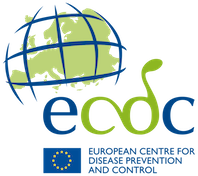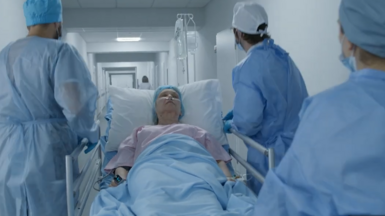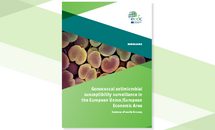Gonococcal antimicrobial susceptibility surveillance in the European Union/European Economic Area
The surveillance of Neisseria gonorrhoeae antimicrobial susceptibility in the European Union/European Economic Area (EU/EEA) is essential for detecting emerging and increasing antimicrobial resistance as the quality-assured data produced can be used to inform treatment guidelines. Since 2009, this surveillance has been co-ordinated by the European Centre for Disease Prevention and Control (ECDC).
During 2023, as in previous years, the European Gonococcal Antimicrobial Surveillance Programme (Euro-GASP) followed an annual decentralised and centralised testing model, requesting participating laboratories to collect gonococcal isolates during September–November 2023. Susceptibility testing was performed on all isolates (MIC gradient strip test, mostly Etest) for the following antimicrobials (where available): ceftriaxone, cefixime, azithromycin, and ciprofloxacin, as well as testing for β-lactamase production for detection of high-level penicillin resistance. Tetracycline was also tested in 2023 to monitor the impact of doxycycline post-exposure prophylaxis (doxy-PEP) in the EU/EEA. Decentralised testing took place on the premise of participating laboratories fulfilling set quality criteria.
In 2023, 24 EU/EEA Member States participated in Euro-GASP, 19 via decentralised testing. In total, 5 269 isolates were submitted to the European Surveillance System (TESSy), 3 184 of which were analysed for this report. The majority of specimens were from male patients (82.6%), and patient age ranged from under one year to 82 years (median age of 30 years). Overall, 29.6% of patients were under 25 years, and males were significantly older than females (median ages of 30 and 25 years, respectively). The anatomical site of specimen collection was mainly genital (73.6%), followed by rectal (14.9%) and pharyngeal (9.3%). In 2023, data were also captured on eye (0.7%), blood (0.2%), joint fluid (0.1%), and cerebrospinal fluid (0.03%) samples. Among patients with known route of transmission and where data on sex was available (59.3%), 53.4% were female or heterosexual males, and 46.6% were men who have sex with men. Where there was information on previous diagnosis of gonorrhoea (24.7%) among cases, 33.3% had previously been diagnosed with the infection. Among patients with a known HIV status (31.2%), 9.7% were living with HIV. Among patients where there was a known route of transmission,97.6% were men who have sex with men. In terms of the probable country of infection, 7.6% of cases where this information was available (34.2%) were likely acquired outside the reporting country.
In 2023, one isolate with resistance to ceftriaxone (MIC=0.25 mg/L) was detected in France. The isolate was extensively-drug resistant with an azithromycin MIC ≥256 mg/L and was also resistant to cefixime (MIC=1 mg/L), ciprofloxacin (MIC=4 mg/L), and tetracycline (MIC=32 mg/L). The percentage of cefixime-resistant (MIC >0.125 mg/L) isolates detected in 2023 (0.2%) was comparable to that observed in 2022, and resistant isolates were reported by five countries. The percentage of isolates with azithromycin MICs above the epidemiological cut-off (ECOFF, MIC >1 mg/L) gradually increased from 7.6% in 2018 to 25.6% in 2022 but decreased to 23.2% in 2023. Isolates with an azithromycin MIC above the ECOFF were reported in all but two participating countries. Additionally, the proportion of isolates with high-level azithromycin ‘resistance’ (HL-AziR, MIC ≥256 mg/L) was greater in 2023: 39 (1.2%) HL-AziR isolates were detected in 15 countries in 2023, compared to 13 (0.3%) HL-AziR isolates reported by five countries in 2022. The percentage of ciprofloxacin-resistant isolates increased from 46.5% in 2017 to 65.9% in 2022, but decreased to 63.0% in 2023. Resistance to tetracycline was 58.4% in 2023.
Dual ceftriaxone and azithromycin resistance remains rare in the EU/EEA, but the proportion of isolates above the azithromycin ECOFF, as well as ongoing sporadic reports of ceftriaxone resistance, is concerning. Therefore, the European gonorrhoea treatment guideline recommends high-dose ceftriaxone plus azithromycin dual therapy or ceftriaxone high-dose monotherapy, which is now most frequently used, as shown in this report. Resistance to cefixime has decreased significantly over the past decade; however, cefixime resistance still needs to be monitored closely, particularly as gonococcal strains resistant to both cefixime and ceftriaxone continue to spread globally. The high level of tetracycline resistance suggests that doxy-PEP is unlikely to reduce the incidence of gonorrhoea across the EU/EEA. Ongoing quality-assured antimicrobial susceptibility surveillance activities, alongside the development of alternative gonococcal treatment regimens are essential to ensure gonorrhoea remains a treatable infection.








